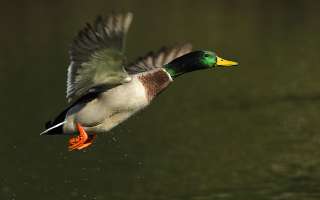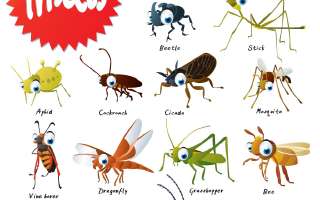Science magazine for children: Packed with science stories, science facts, science features, and other science learning resources for children. Discover the known, the unknown, and little-known facts in our science articles. Learn the how and why of everyday things and explore rare and exotic living species.
358 items in this section. Displaying page 6 of 36
Why Do Plants Bear Fruit?
Do you like fruits? Have you ever wondered why plants produce fruits? Is it only because nature wants you to enjoy eating its fruits and sing its praises? The answer is no. Plants are much smarter than what you think they are. They actually use human beings, animals and birds who eat their fruits to propagate their kind. In other words, disperse their seeds. The fruit serves as a mother’s womb where the embryo of a baby plant is nurtured....
How do Ducks Stay in Water and not Get Wet?
When you get out of the swimming pool or bathtub, you are soaking wet. Had you been a duck, you would be swimming in water and yet not look really wet. It sounds crazy, but it’s true. The secret lies in the layer of smooth feathers, which keeps the water out and also helps the duck float. Moreover, these smart ducks make a kind of oil, which they spread on their feathers with their beaks. And since oil and water do not mix, the water just rolls off their bodies....
The Fish Which Changes From Female to Male
There is a fish called the blackspot angelfish, which can change from female to male. No, it cannot do it by simply wishing to become male. The change happens for a specific reason. The angel fish live in groups. And each group has one male fish, which is blue in colour, and four female fish, which are yellow in colour. The male angelfish is the strongest and largest member of the group. He is the one who protects and looks after the females and acts like their ‘security guard’....
Who Invented the Photocopying Machine?
We have all used it at one time or another to copy our school documents, or parts of a book borrowed from the library, or just about anything we wanted a copy of. It’s just a matter of pressing a button of the xerox machine and hey Presto! a piece of paper comes out at one end, an exact duplicate of the document we needed copied! However, when the invention was first patented, nobody wanted anything to do with it....
Why Do Stars Twinkle?
Watching stars on a moonless night can be an quite an interesting experience. As clusters of stars take familiar forms – of a bear, a man in armor wielding a sword, millions of other stars simply twinkle. As if they were playing hide and seek with one’s eyes. We all know that each star is actually like the sun. And the huge collection of stars on the night sky is like a collection of many, many suns....
The Wonderful World of Insects
What is an Insect? Insects are found all over India from the icy Himalayas to the burning sands of the Thar Desert. They are found in the murky depths of rivers and lakes, and in the grass in your neighbourhood park. In fact, insects are everywhere-flying in the air, hidden among leaves and flowers, buried deep in the ground and even swimming in the water! Some insects are so small that you may not be able to see them while others like certain beetles are as big as a mouse....
Why does Milk spill over when it Boils?
How many times have you seen milk boil and spill over, and wondered why this happens? To answer this question we have to know a little more about the composition of milk. Milk and its composition Unlike water, milk is not a simple liquid. It is a colloid and contains many substances in suspended form. These substances are mainly protein, sugar and fat. When milk is heated slowly, the proteins and fat get separated. Since they are lighter than the milk they collect on the surface in the form of a layer called cream....
Where Did Shoes Come From?
Ooh, aah, ouch! People in ancient times must have yelped like this when they walked on rough ground without any shoes on. And it was probably the pain and discomfort that propelled them to cover their feet for protection. Footwear has a history which goes back many thousands of years, and has long been an article of prestige for people in different societies. Where Did Shoes Come From? [Illustration by Anup Singh] The earliest footwear, probably made of plaited grass or rawhide held to the foot with thongs was undoubtedly born of the necessity to provide some protection when moving over rough terrain in varying weather conditions....
A Fish with Three Hearts: Cuttlefish
It is said to be a royal among sea animals because it has blue blood, literally. And the cuttlefish has a large heart. Actually, it is not one but three hearts. And it is not even a fish but belongs to the same family as the squid and the octopus. They are called the cephalopods, which literally translated means head-foot. The blood of the cuttlefish is blue because of the huge amount of copper in it....
Why do Flies have Compound Eyes?
Just like a man woos the woman he loves, takes her to nice restaurants, buys her presents, and courts her to impress her before marriage, animals too choose their mates through courtship. Since animals cannot do all these, they do it differently. Some animals put up a colourful display, while others give little gifts to their beloved – a choice worm, a designer nest and so on. A few species display their love through a series of grunts and others, like the Saurus crane or the stickleback fish, perform an intricate courtship dance....









